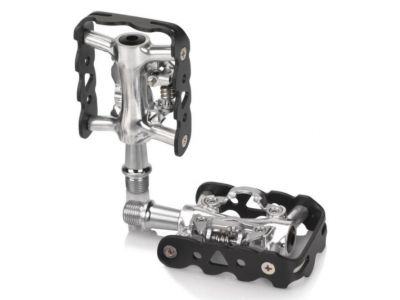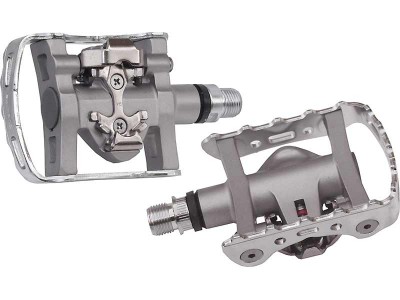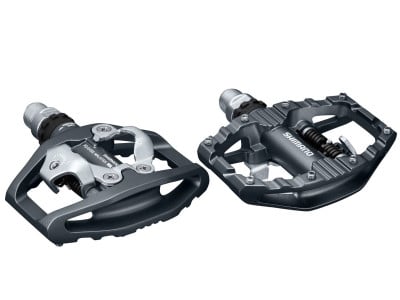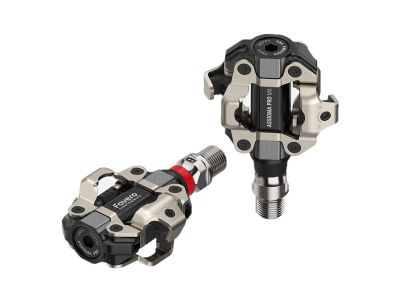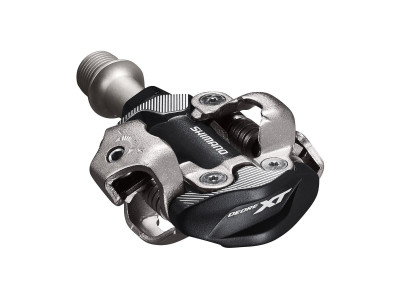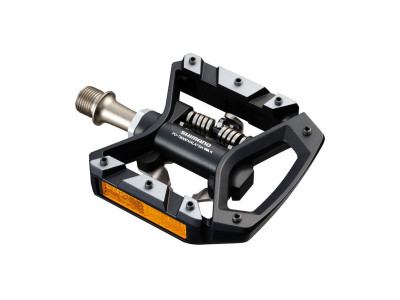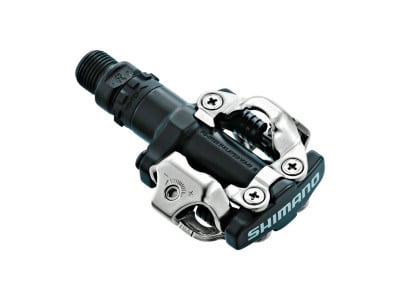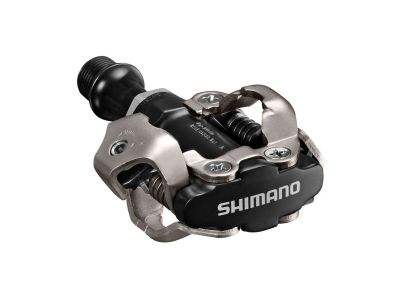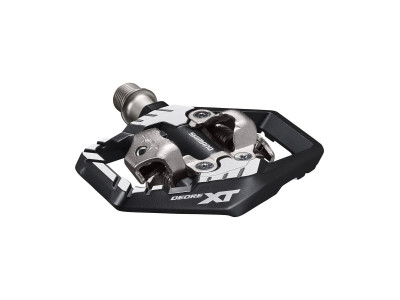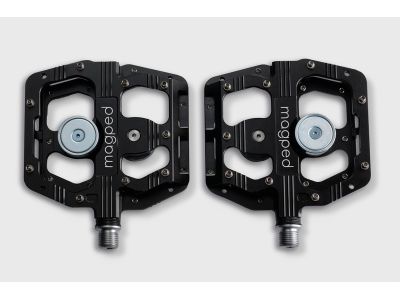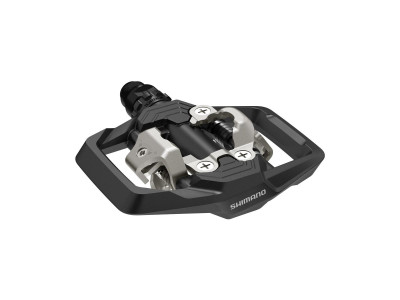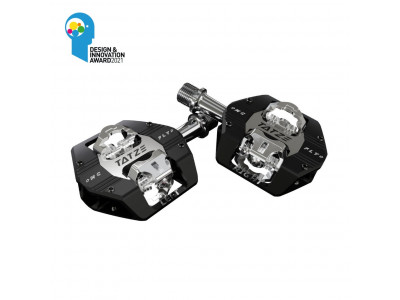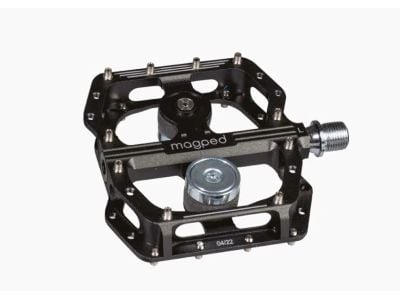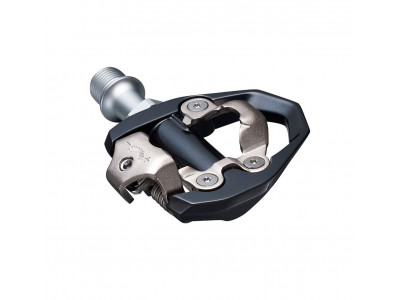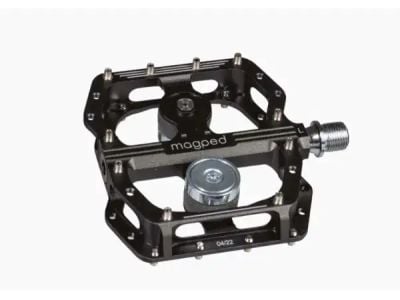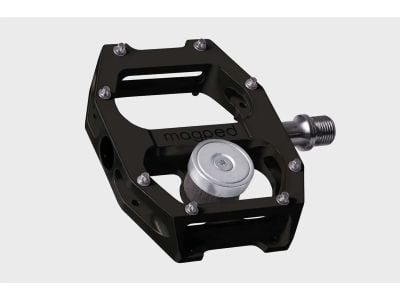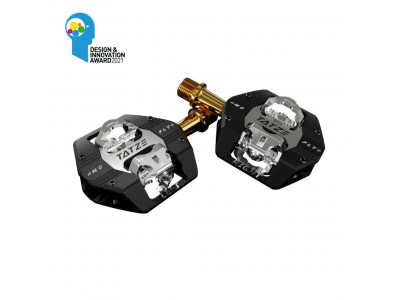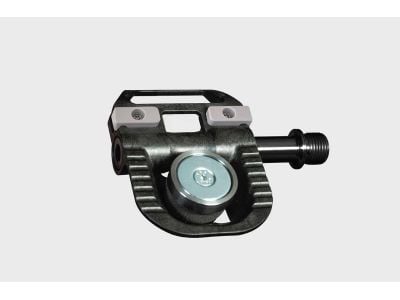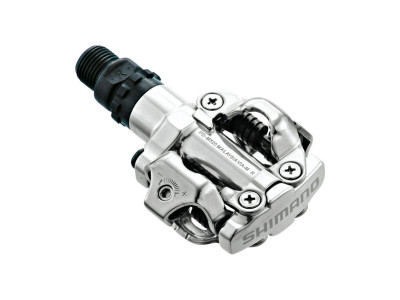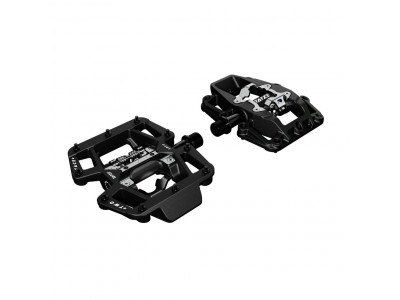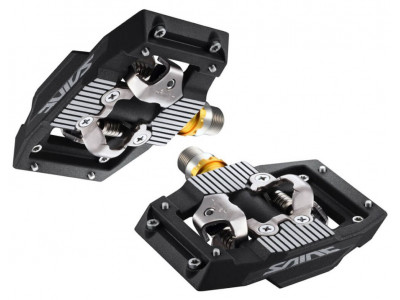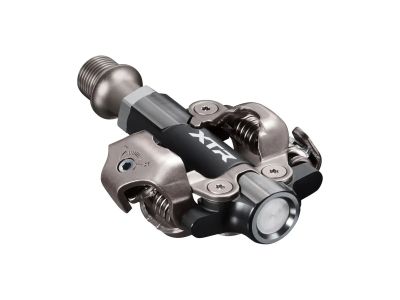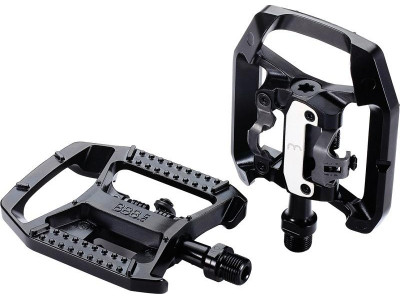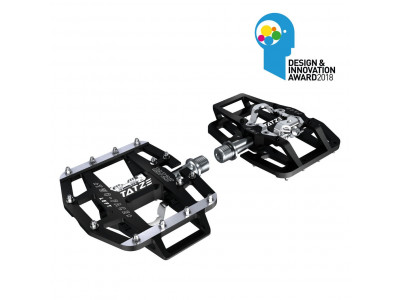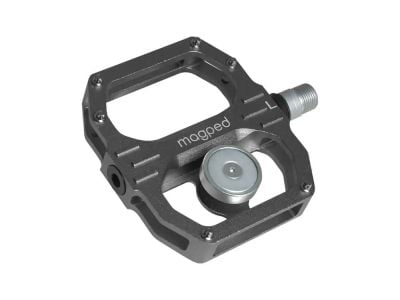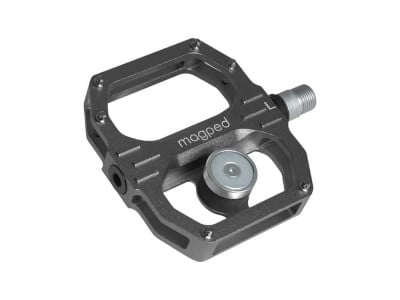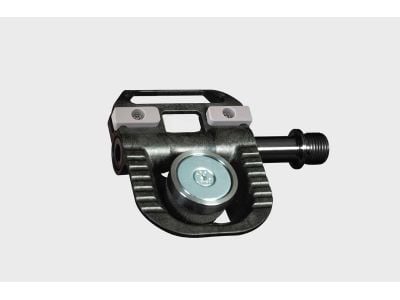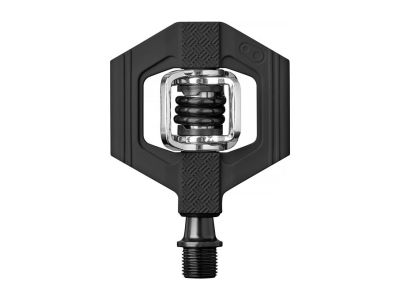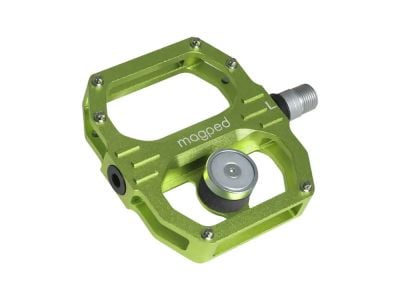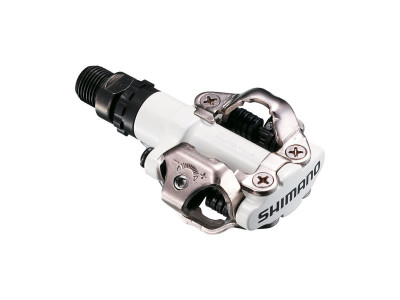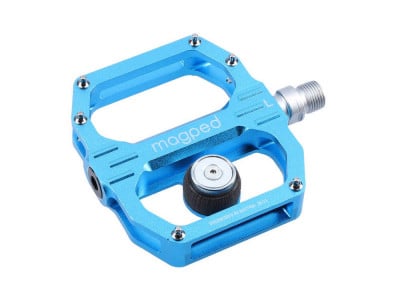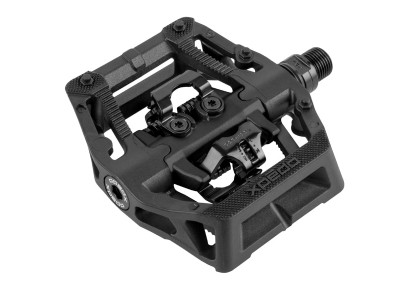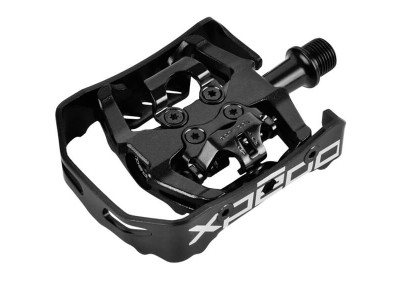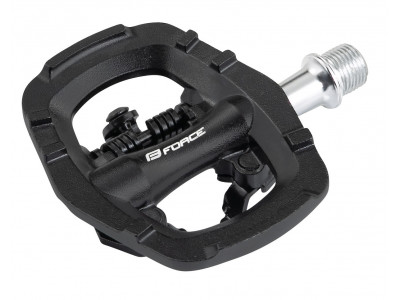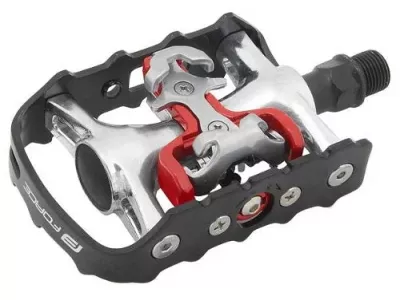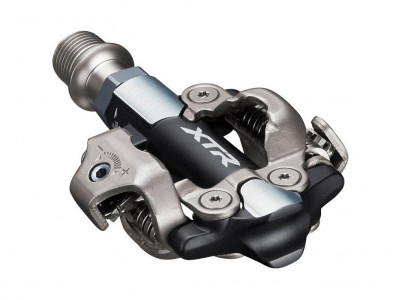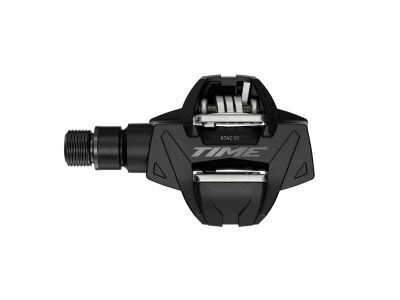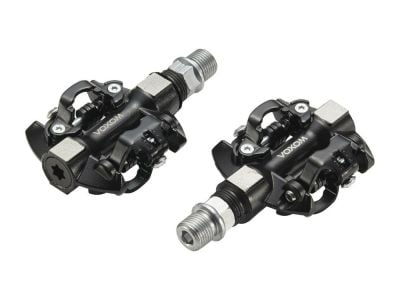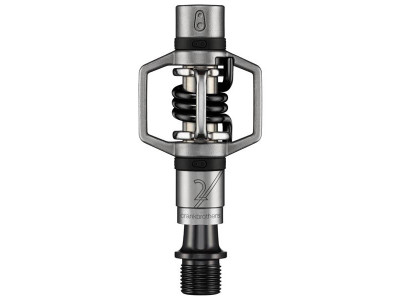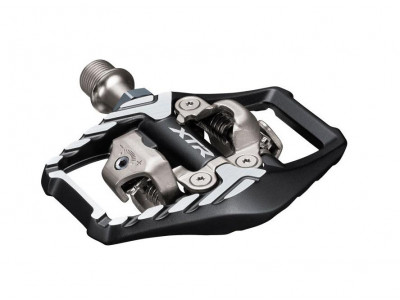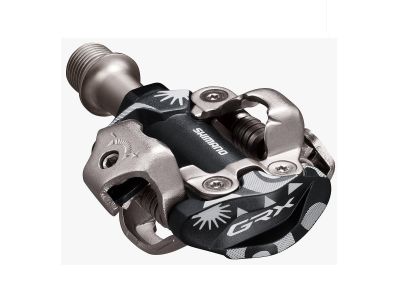Clipless pedals are an excellent tool for improving the efficiency of pedalling and increasing control over the bicycle. Those on MTB are adapted to the environment where they will be used, so they are more durable, better resistant to pollution and easier to “clip”. Racers reach for the double-sided (multi-sided) ones, made of more durable and lighter materials such as titanium and carbon. Clipless MTB pedals can also be combined, i.e. a pedal with a platform. This allows the use of cycling shoes. Before choosing a specific model, make sure that your cycling shoes allow for their use. Before you go out on the road, try using them in a safe place.
The following parameters are important for pedals for mountain biking, which differentiate individual pedals:
- Clipless system type: Various types of two and three bolt systems are available. Twin-bolt systems such as SPD (Shimano Pedalling Dynamics) are commonly used for mountain biking due to their durability and ability to shed mud.
- Pedal compatibility: Make sure the pedals you pick are compatible with the cleats on your cycling shoes. Different pedal systems have specific clamping designs, so it's important to match them accordingly.
- Pedal body material: Mountain bike pedals are usually made of durable materials such as aluminium, steel, or a combination of these. The choice of material affects the overall weight, strength, and durability of the pedals.
- Pedal axle: The axle connects the body of the pedals to the crank arm. It is commonly made from materials such as chrome steel or titanium, which provide strength and durability while maintaining relatively low weight and friction.
- Platform size: Compared to road bike pedals, mountain bike pedals often have a larger platform. The larger platform provides better stability and support, especially when riding in difficult and technical terrain.
- Pedal design: Mountain bike pedals can have an open design to keep mud and debris out, or a closed design with a stronger platform. The construction depends on specific riding conditions and personal preferences.
- Release tension: Pedals have an adjustable release tension that allows the rider to adjust the force required to disengage the foot from the pedal. This setup is key for riders who want a secure connection but also need a quick and easy disconnect when needed.
- Float: The “Float” parameter refers to the freedom of movement that the clutch on the pedal allows. Mountain bike pedals usually have a slight movement that allows the rider's feet to move laterally and reduces stress on the knees.
- Weight: The weight of the pedals may vary depending on the materials used, construction and other features. Lighter pedals are generally preferred by mountain bikers who prioritize weight savings for better climbing and handling.
- Durability and maintenance: Mountain biking can be hard on the pedals, so durability is an important factor. Look for pedals with sealed bearings and rugged construction to withstand tough off-road riding. Regular maintenance such as cleaning, lubrication and inspection of bearings is essential to ensure optimal performance and long life.
How to choose clipless pedals?
When choosing clipless pedals, several criteria and individual needs of the rider must be taken into account, these are some of them:
- Driving style: Determine your driving style and terrain preferences. Different pedals can be suitable for off-road, trail or downhill riding and offer specific features to suit different needs.
- Shoe compatibility: Make sure the pedals you pick are compatible with the cleats of your cycling shoes. Some brands of pedals may have proprietary systems, so it is essential to check compatibility.
- Budget: Consider your budget and look for pedal options that offer a good balance between price and performance. Higher-end pedals often offer lighter weight, better durability, and better mud-shedding abilities.
- Personal preference: Some riders may have personal preferences when it comes to pedal float, tension settings, or platform size. Consider these factors when choosing pedals.
Are clipless pedals better than flat pedals?
Clipless pedals and flat pedals have their advantages and disadvantages, and the choice between them depends on personal preference and riding style.
Clipless pedals are attached using special cycling shoes that have a pedal connection system on the sole. They offer several advantages, including a secure connection between the rider's feet and the pedals, which can increase pedalling efficiency and power transfer. This connection also allows better control of the bike, especially when traversing uneven terrain or during technical manoeuvres. In addition, clipless pedals can provide a more stable foot position, reducing the risk of the foot slipping off the pedal.
On the other hand, flat pedals, also known as platform pedals, do not require special cycling shoes or cleats. They offer more freedom of movement and allow riders to easily dismount the foot if necessary, making them popular with downhill and freeriders on mountain bikes. Flat pedals also provide a sense of security and can help develop skills such as bunny hops and jumps, as riders can quickly and easily separate themselves from the bike if needed. In addition, flat pedals are more versatile as they can be used with any type of footwear.
Some riders prefer the efficiency and control of clipless pedals, while others prefer the freedom and versatility of flat pedals.
Are there different types of pedal systems for mountain bikes?
Yes, there are several types of pedal systems for mountain bikes. The most common types include Shimano SPD, Crankbrothers, Time ATAC, Look X-Track and Speedplay Frog. Each system has its own design and features, so when choosing the right pedal system for your mountain bike, it's important to consider factors such as engagement mechanism, float parameter, and mud removal ability.
